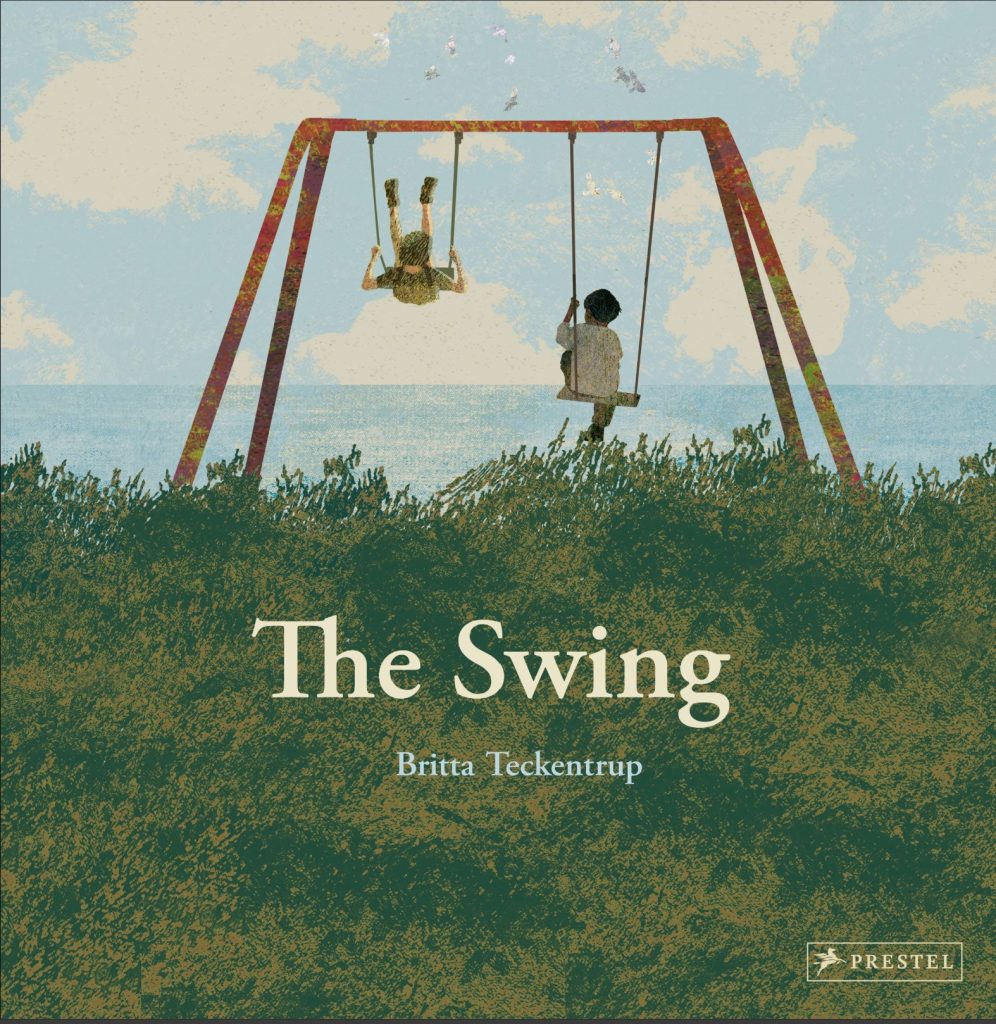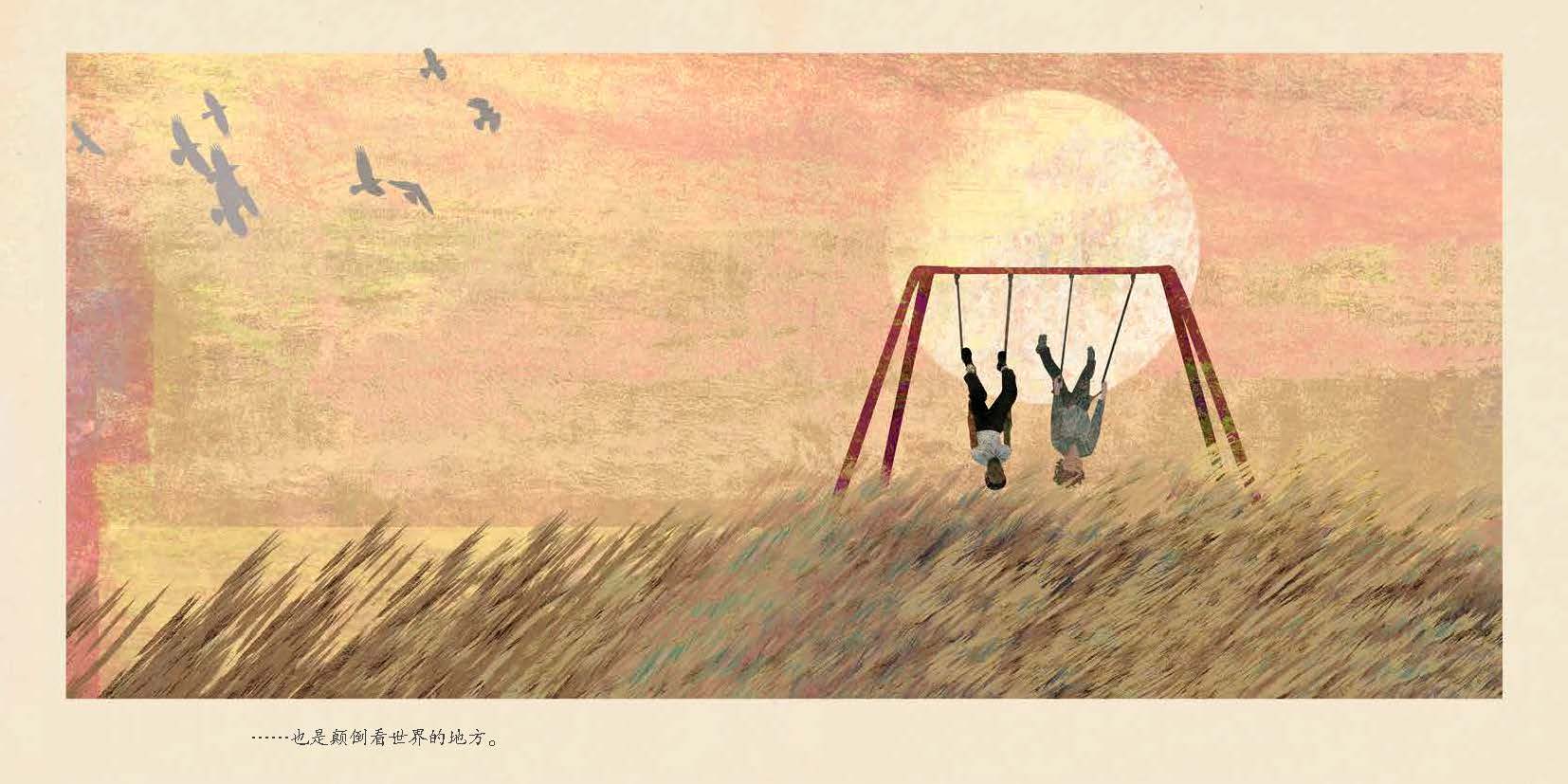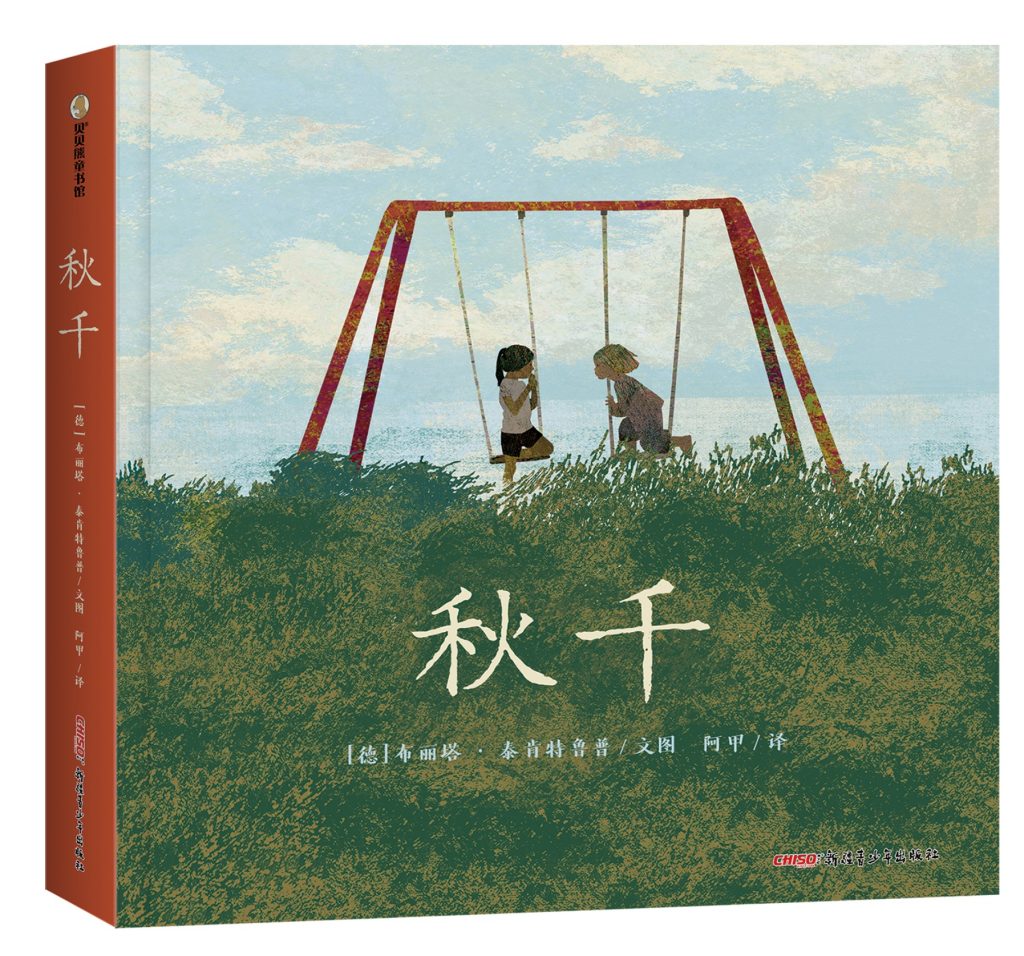
The swing has always been there.
It looks out to sea and invites everyone to take a seat.
…
The swing is still there.
It looks out to sea and invites everyone to take a seat.
It is a place of beginnings
…
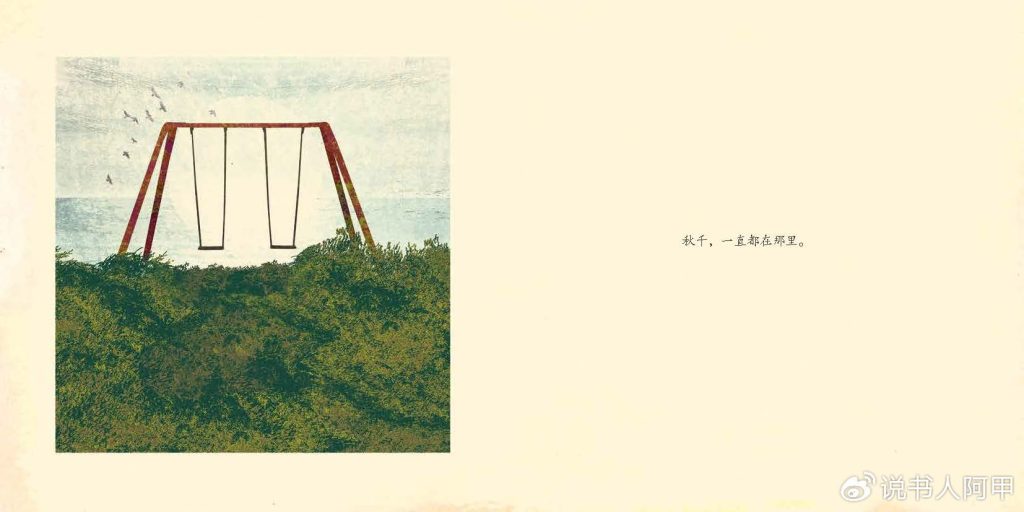

This is the beginning and end of “The Swing”, written and illustrated by German picture book artist Britta Teckentrup. It is like the ebb and flow of the tide on the beach, rising is also falling, falling is also rising; it is also like a cycle of time, the beginning is also the end, the end is also the beginning…
This picture book is 160 pages long, far exceeding the length of a normal “children’s picture book”. The small square size book opens into a stretched rectangle; the pages are sometimes half text and half picture, sometimes the whole picture without words fills the whole page, sometimes the words are dotted like musical notes, sometimes the picture is reduced to leave blank space beside or above and below, and sometimes it is divided into regular or irregular small pictures, the rhythm is accelerated, and the imaged text also sways along… The layout composition is like a poem and painting, revealing a quiet contemplation, and in the constant change, it hides a gentle and warm leap. Turning the pages gently and reading quietly, it seems as if you can hear the soothing sound of the waves, or a familiar and vague piece of music.
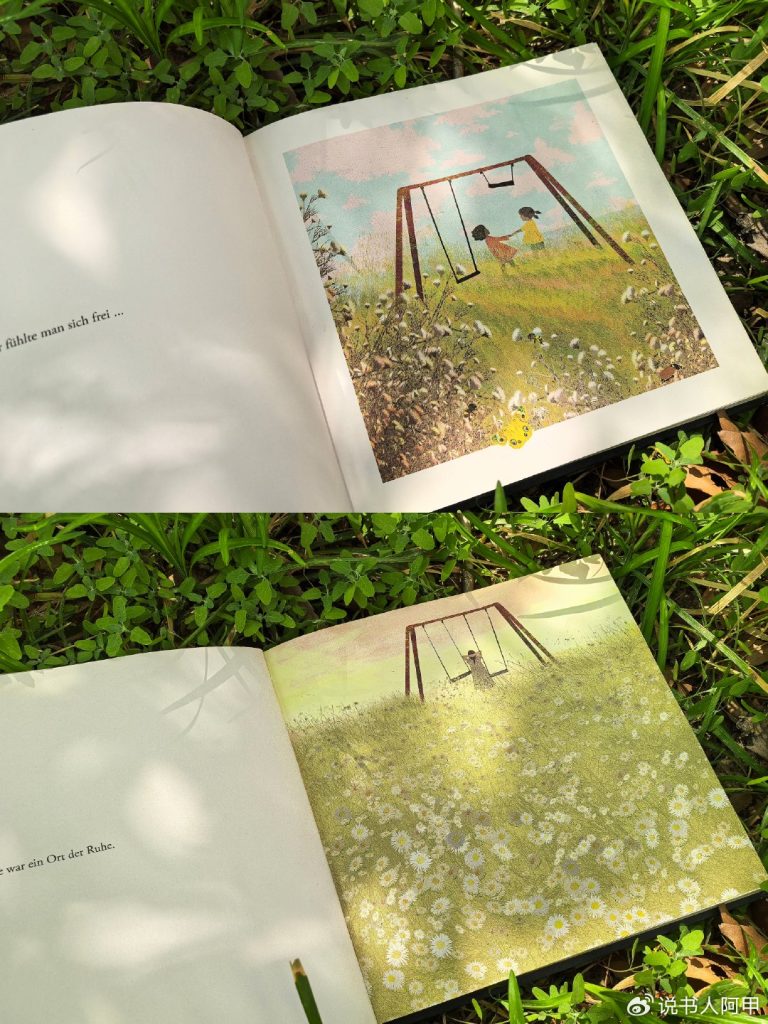
The biggest reward of translating a book is that you can, as a special reader, deeply immerse yourself in the context that the author has worked hard to create, because before converting the language, the “reader” as the translator needs to read it repeatedly to fully feel and understand the interest of the work. The feeling of reading “The Swing” carefully is quite subtle. It “distracted” me to some extent. I often drifted away from the clues of the picture and text narrative, and unconsciously produced some quite divergent associations.
For example, I can’t help but think of the smell of the seaside. This is not surprising to me because I was born by the sea, but I have lived inland for most of my life. So whenever I have the opportunity to stroll along the beach, I can’t help but smell the “sea smell” that others think of.
But what’s interesting is that I actually thought of the modern dance of German dance artist Pina Bausch, which I saw at the Tianqiao Theater in Beijing more than a decade ago. The elegance, power, and indescribable feeling left a deep impression on me. I think it may be because I read an interview with Britta, who grew up in Wuppertal, Germany, where Pina Bausch lived. She said: “I guess that Pina Bausch and growing up around so much nature had a big impact on my work.” Indeed, the attempt to explore deep emotions and complex and fascinating human relationships through artistic activities can be felt in Pina’s dance and Britta’s picture books.
I also inexplicably recalled the past when I took my daughter to see a Chopin musical. We both liked the various music selections in the play and felt very familiar, but there were only two choral songs that seemed particularly fresh and I couldn’t tell which two Chopin songs they were. So, driven by strong curiosity, I tried to send an email to a young musician who was playing the piano on the stage at the time, whom I didn’t know at all, for help. Then I unexpectedly received an enthusiastic reply. It turned out that she was in charge of the arrangement of the musical, and the two really “uncommon” pieces of music were actually from Polish folk songs — I listened to them many times later, and I can still remember the main melody of one of them…
Maybe I have gone too far off topic, but what I really want to say is that memory is really a bit “inexplicable”. We always want to “choose” memory, and in fact we try very hard to choose, but memory seems to have its own life and will, and sometimes it seems to “choose” us in turn.



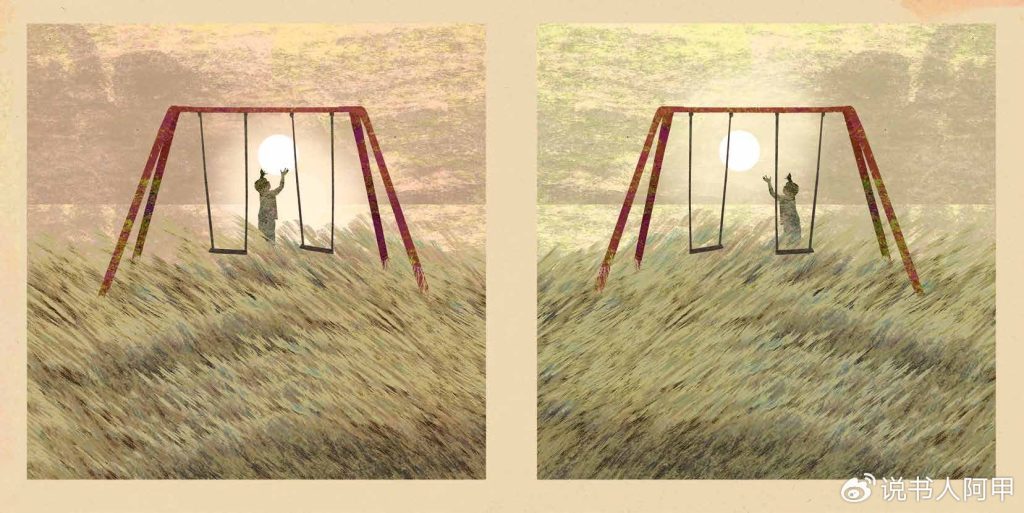
On the book review website Goodreads.com, a reader commented on “The Swing”: “Another children’s book that makes me want to cry, in a good way.” Although this book was not tailor-made for this reader, it still touched her tears. I guess it also “inexplicably” evoked some memories.
This is actually a book that Britta customized for herself. In an interview, she recalled that the inspiration for writing “The Swing” originally came from the swing in her grandmother’s garden during her childhood. There, she spent many carefree times, and these experiences became the starting point for her to think about the flow of life, emotional changes and memory preservation. After growing up, whenever she returned to her hometown and passed by the playground she often visited as a child, those abandoned swings seemed to carry traces of time and precipitated memories. For her, the swing is not only a physical space, but also a container of emotion and memory, witnessing the passage of time and the changes in life. Especially those abandoned swings, they seem particularly mysterious and lonely, but full of life potential.
When designing the narrative structure of “The Swing”, Britta chose a non-linear approach, which brought a unique fluidity to the story. Different from the traditional linear narrative method, “The Swing” uses alternating characters and scenes, breaking the order of time and events, and creating a freer way of expression. There is no strict chronological order for each character’s encounter with the swing in the story, but the swing is used as a connection point to connect the stories of various stages of life.
The choice of this structure coincides with the metaphor of the swing itself: the swing represents the fluctuation and uncertainty in life, and time and emotions flow in a constant back and forth. It is this “swinging” rhythm that makes the whole book appear free and layered.
So, what kind of memories are carried by the swing?

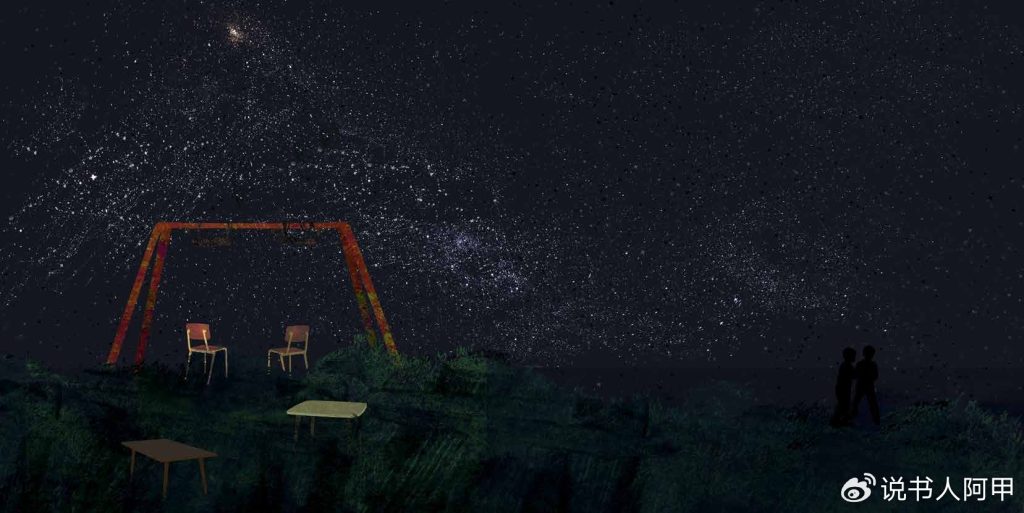
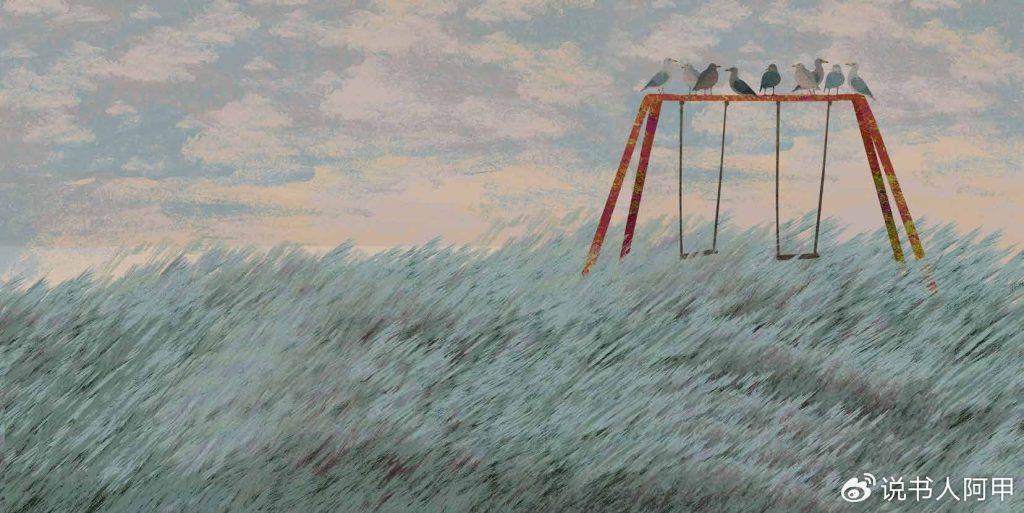
As a picture book for children, the most visible thing is the game between children and swings. There are children playing alone, two people playing together, and many people playing together. Some enjoy the present moment, some indulge in imagination, and some gather and talk beside the swings. As the years go by and the scenes change, the swing begins a free-flowing connection journey, extending from the friendship between children, the brotherhood between brothers and sisters, to the affection between parents and children and the generations beyond, and from an old man’s memories of his wife to love.
Just as a swing swings up and down, life naturally has its moments of loss. “Loss” may be one of the themes that makes this book quite fascinating, because the swing not only witnesses joy, but also carries sadness. At certain times, the swing is empty, and the surrounding natural scenery is filled with loneliness and emptiness. Sadness will visit the swing, but it will eventually leave, symbolizing that the feeling of loss is short-lived, but it cannot stay forever.
Britta seems to have deliberately made the narrative structure of this book appear “loose”, but in fact, through the changes in page layouts and illustrations, she cleverly imitated the movement of the swing and the passage of time, metaphorically representing the impermanence and flow of life. After reading it repeatedly, I vaguely found an overall clue, and felt that the artist was exploring the theme of “memory and loss, recovery and reconstruction” through the image of the swing.
For example, Mia’s daily companionship with her grandmother, the elderly’s nostalgia for their deceased wives, and Peter’s desire to show his abilities to his father and the world… That is the part of memories. Whenever the swing stops, it often symbolizes the stagnation of time and the severance of interpersonal relationships. It is a kind of loss, not heavy, but with a hint of gentle sadness. The most touching part is the recovery and reconstruction after a period of blankness. For example, Peter, who has traveled the world and proved himself, takes his son back to “where it all began.” When the swing was destroyed by a storm, the people who had found comfort here worked together to repair it, symbolizing the reconstruction of emotions and memories. Whether it is the re-cherishing of family affection or the re-picking up of loss, the swing has become a witness to people’s emotional reconstruction. It is not only a memory of the past, but also a hope for the future.
Of course, for such a “scattered” book, everyone may read different stories, and some fragments and pictures in it may evoke completely unexpected memories. Britta keeps this open. Someone asked her if she has her own favorite story or favorite picture in this book? She said, maybe Peter and his related stories, or maybe the picture of the swing standing in the sea? But her favorite illustrations are “The swing was a place to share secrets”, or “On some November days, the sea completely disappeared.” — which may be related to some of her own memories.
As for me, I like the four consecutive pages after “When Jill looked out over the sea…” the most. “Doesn’t the sea hold more secrets than the sky?” — This is an irresistible question for people who have liked to be in a daze in some way since childhood. Look at the next two pages — Britta created an impressionist painting-like effect through soft tones and clever light presentation. The swing standing in the sea water perfectly presents the state of daydreaming. As the colors gradually change, even the text is integrated into the picture. Then, as the pages continue to turn, readers will feel that they are integrated into the sparkling sea!
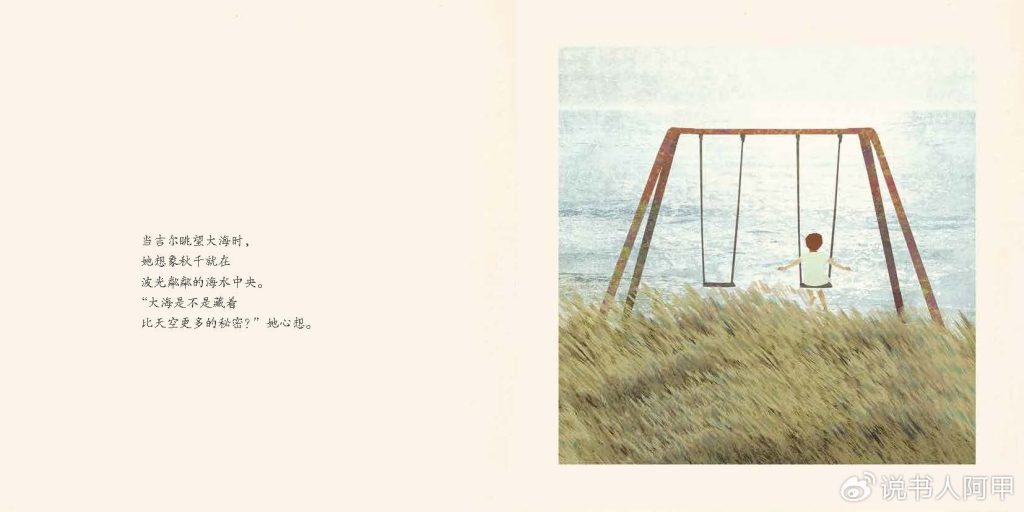



“The Swing” is indeed not a “children’s picture book” in the general sense, and of course it is not customized for certain groups of people, but every reader, child or adult, can read his or her own story in the book and connect with his or her own private memories. In a sense, life is made up of a series of memories, memories that we choose, or memories that we choose to retell, including the way we rely on to retell.
“The Swing”, a picture book that is both poetic and philosophical, and visually breathtaking, is a masterful attempt at re-narration. It has the power to resonate deeply with readers, connecting the present to the past, and the future to the now. It is, in many ways, a precious gift—one that you might give to your future self.
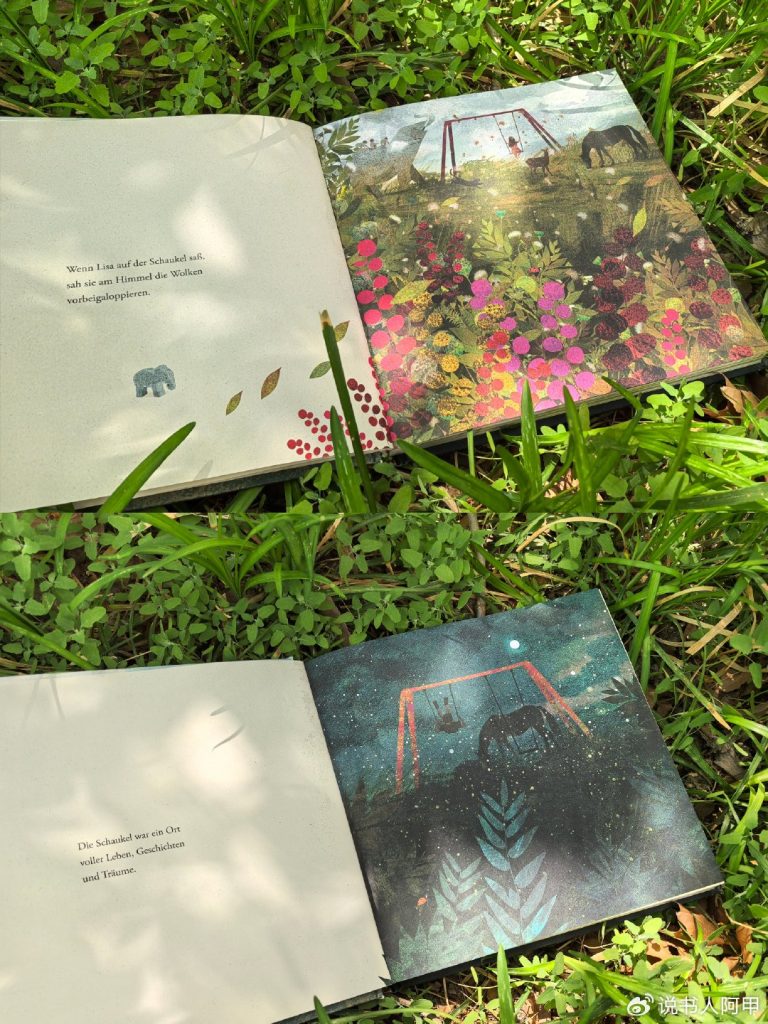
Within the book, the swing serves as an eternal symbol—spanning time and space, it becomes a mirror through which each reader may glimpse their own turning points in life. It is a beautiful means of connection, offering a profound meditation on memory, loss, and renewal—worthy of our contemplation at every juncture, now and in the years to come.
Indeed, life is full of uncertainty. And yet, perhaps it is this very uncertainty that makes life so achingly beautiful. Don’t you think?
Ajia written in Beijing on April 30, 2025

